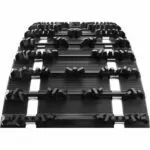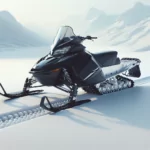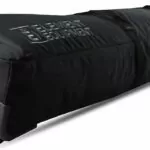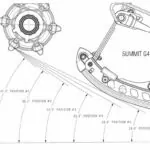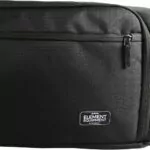Embarking on a thrilling ride with your snowmobile is always an exciting experience. But what happens when the track of your snowmobile needs replacement? Fear not, because in the article “How To Change A Snowmobile Track?” you will be guided through the whole procedure, step by step. Changing a snowmobile track may sound like a daunting task, but it can actually be an interesting DIY project you can tackle on your own. By the end of this read, you’ll not only know how to change a snowmobile track but also understand why it’s essential to maintain the snowmobile in pristine condition.
Understanding the Need to Change a Snowmobile Track
Snowmobiling can be a thrilling pastime during the winter months, but it’s essential to maintain your snowmobile to ensure maximum performance and safety. One primary aspect of maintaining your snowmobile is understanding when a track needs to be replaced.
Identifying signs of wear and tear
Much like car tires, snowmobile tracks get worn out over time. Common signs of wear and tear include cracks, missing lugs, or torn edges. If you notice visible damage or a noticeable decrease in performance, it’s likely time for a replacement.
Estimating the lifespan of a snowmobile track
The lifespan of a snowmobile track can vary based on use and the conditions in which you’re riding. Generally, expect tracks to last approximately 5,000 miles. However, if the track is continuously used on harsh or rocky terrain, lifespan can be significantly shorter.
Assessing the impact of damaged tracks on snowmobile performance
A damaged or worn out track can severely impact the performance of your snowmobile. The poor traction may make it harder to ride or steer, and the snowmobile may not maintain optimal speed or power. This not only hinders your snowmobiling experience but can also pose serious safety risks.
Purchasing a Suitable Replacement Track
Once you’ve identified the need for a new track, it’s time to find a suitable replacement.
Determining the right type and size of track
Snowmobile tracks come in various types and sizes to cater to different riding styles and conditions. Factors such as the type of snow, terrain, and your snowmobiling style will dictate the kind of track you require. Measurements are also important—make sure your new track matches your snowmobile’s track length and width.
Exploring different track brands and models
There are numerous brands and models of snowmobile tracks on the market. It’s beneficial to do some research or ask for recommendations, aiming to find a track that suits your specific needs and expectations.
Considering budget constraints and durability
While it can be tempting to save money up front, purchasing a cheaper, less durable track could end up being more costly in the long run. It’s crucial to find a balance between affordability and durability when purchasing a replacement track.
Finding reliable retailers or suppliers of snowmobile tracks
Where you purchase your track matters. Choose retailers or suppliers known for quality products and exceptional customer service. A reputable retailer can help guide you toward the best snowmobile track for your needs.
Gathering the Necessary Tools and Equipment
Before you start changing your snowmobile track, make sure you have the necessary tools and equipment.
Listing down standard tools for track replacement
Typically, you’ll need a few standard tools: sockets, wrenches, a pry bar, and possibly a torque wrench. It’s worth noting that sizes should match the nuts and bolts used on your snowmobile.
Choosing between manual and power tools
The choice between manual and power tools often depends on what you have available and personal preference. Power tools can simplify and speed up the process, but manual tools can usually get the job done as well.
Securing safety equipment and protective gear
Safety should be your priority when working on any machine. Investing in high-quality safety equipment such as gloves, safety goggles, and sturdy footwear is essential.
Preparing the Snowmobile for Track Replacement
Before you start, your snowmobile needs to be adequately prepared.
Cleaning and parking the snowmobile
Wipe down your snowmobile beforehand to ensure a clean workspace. Also, make sure it’s parked on a stable and flat surface.
Removing the snowmobile’s skis for easier access
It often makes the process easier if you remove the skis from your snowmobile. This provides easier access to the track and suspension components.
Checking and draining any fluids that could interfere with the process
Before you start, check the oil and coolant levels in your snowmobile. If possible, drain them to prevent leaks or spills during the track replacement process.
Removing the Old Snowmobile Track
Next, you need to remove the old, worn-out track.
Loosening the tension bolts on the track
The first step is to loosen the tension bolts on the track. This will allow slack in the track, making it easier to remove.
Detaching the rear suspension
Next, detach the rear suspension. This will give you enough space to pull the track out from the snowmobile.
Pulling out the track and setting it aside for disposal
Finally, pull out the old track and set aside for proper disposal. Ensure you follow local regulations when disposing of used tracks.
Installing the New Snowmobile Track
Now comes the central part of the process—installing your new snowmobile track.
Positioning the new track correctly
Firstly, make sure you position the new track correctly. The track should be centered with the correct side facing outward (usually indicated by arrow directions on the track).
Reattaching the rear suspension
After positioning the track, reattach the rear suspension. Follow the manufacturer’s instructions for correct placement and installation.
Tightening the tension bolts on the track
Finally, tighten the tension bolts. This creates the necessary tension for the track to function correctly. Do not over-tighten, as this can cause track wear or lead to other mechanical issues.
Inspecting the Newly Installed Track
After installation, you need to thoroughly inspect your newly installed track.
Inspecting track alignment and tension
Ensure that your track aligns correctly with the sprockets, and check that the tension is appropriately set. You should be able to lift the middle of the track’s slider about one inch.
Checking for proper track rotation
Start your snowmobile and gently throttle to ensure the track rotates smoothly. There should be no skips or jumps in the motion.
Evaluating the securely attached suspension and screw tightly
Check to ensure that the rear suspension is securely attached and all screws are tightened properly.
Performing a Test Run
Now that you’ve installed and inspected your new track, it’s time for a test run.
Starting the snowmobile to check for smooth operation
Start your snowmobile and let it run for a few minutes. Check for smooth operation and consistent track movement.
Observing the motion of the new track
Watch the track as it moves. It should run smoothly, with no unusual movements, jerks, or skips.
Ensuring no unusual noises or vibrations are present
Listen for any unusual noises or vibrations that weren’t present before. If you notice anything unusual, shut down your snowmobile immediately and troubleshoot.
Conducting Regular Maintenance
A new track won’t stay new without proper maintenance.
Creating a maintenance schedule for the new track
Establish a regular maintenance schedule for your new track, including inspections, cleaning, and tension adjustments.
Cleaning the track regularly to prolong its life
Dirt and debris can shorten the lifespan of your snowmobile track. Regular cleaning will help prolong its life and maintain optimal performance.
Monitoring for potential issues or signs of wear and tear
Stay vigilant for any potential issues or signs of wear and tear. Early detection can help prevent serious damage and costly repairs.
Tips and Warnings
Finally, a few tips and warnings to keep in mind.
Stressing the importance of safety during track replacement
Safety during track replacement cannot be overstressed. Always use protective gear, take your time and, if you’re unsure of what to do, seek help or hire a professional.
Discussing common mistakes to avoid
Common mistakes such as over tightening or improperly aligning the track can lead to issues down the road. Read manuals, tutorials or watch demonstration videos to avoid these pitfalls.
Providing useful tips based on common snowmobile models
Different models may require slightly different approach. Gathering tips and advice specific to your snowmobile model can be invaluable during the replacement process. Read your snowmobile’s manual, join forums, or ask fellow enthusiasts.
- What Snowboard Bindings Should I Get? - January 23, 2024
- What Size Screws For Snowboard Bindings? - January 23, 2024
- How To Snowmobile On Water? - January 23, 2024

